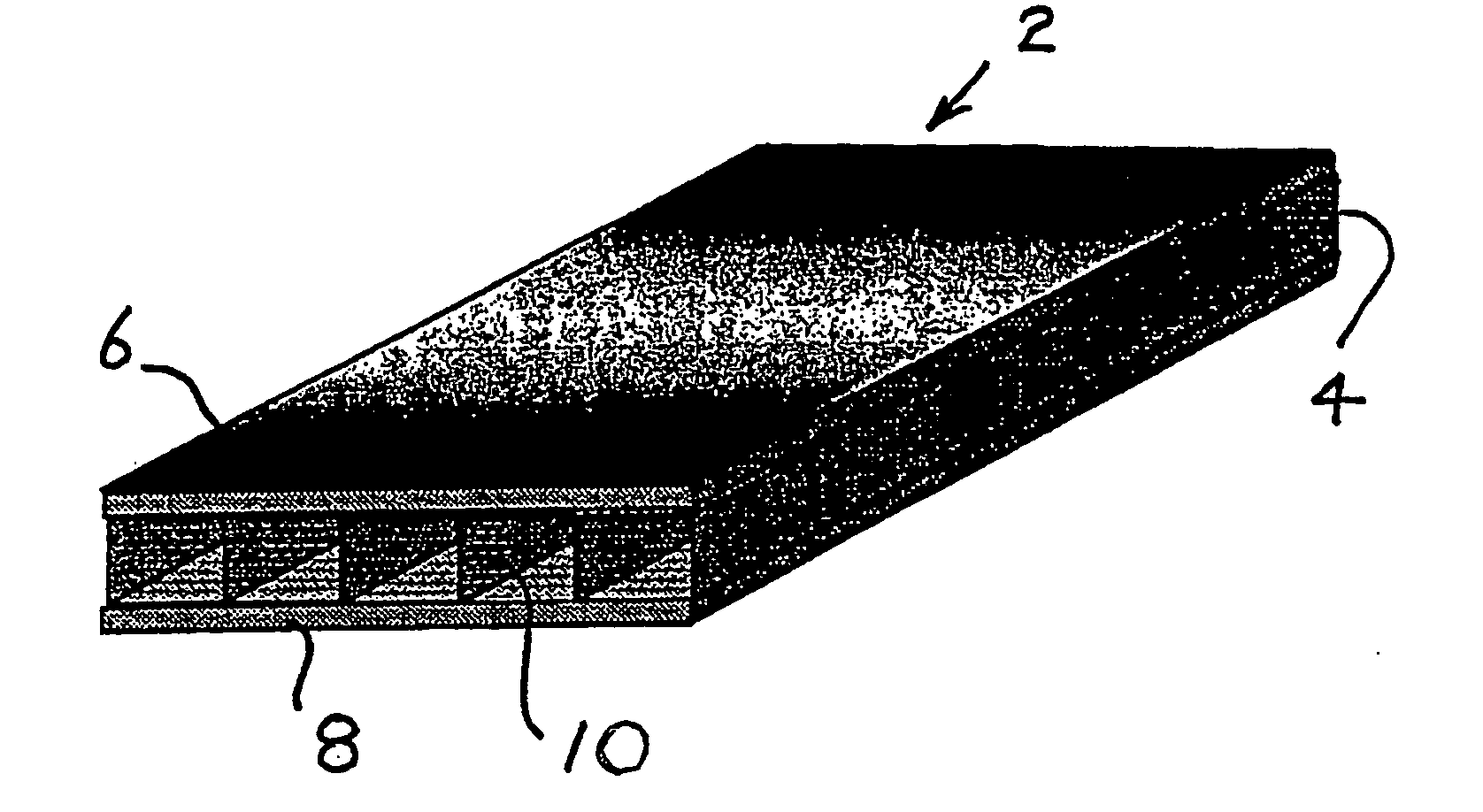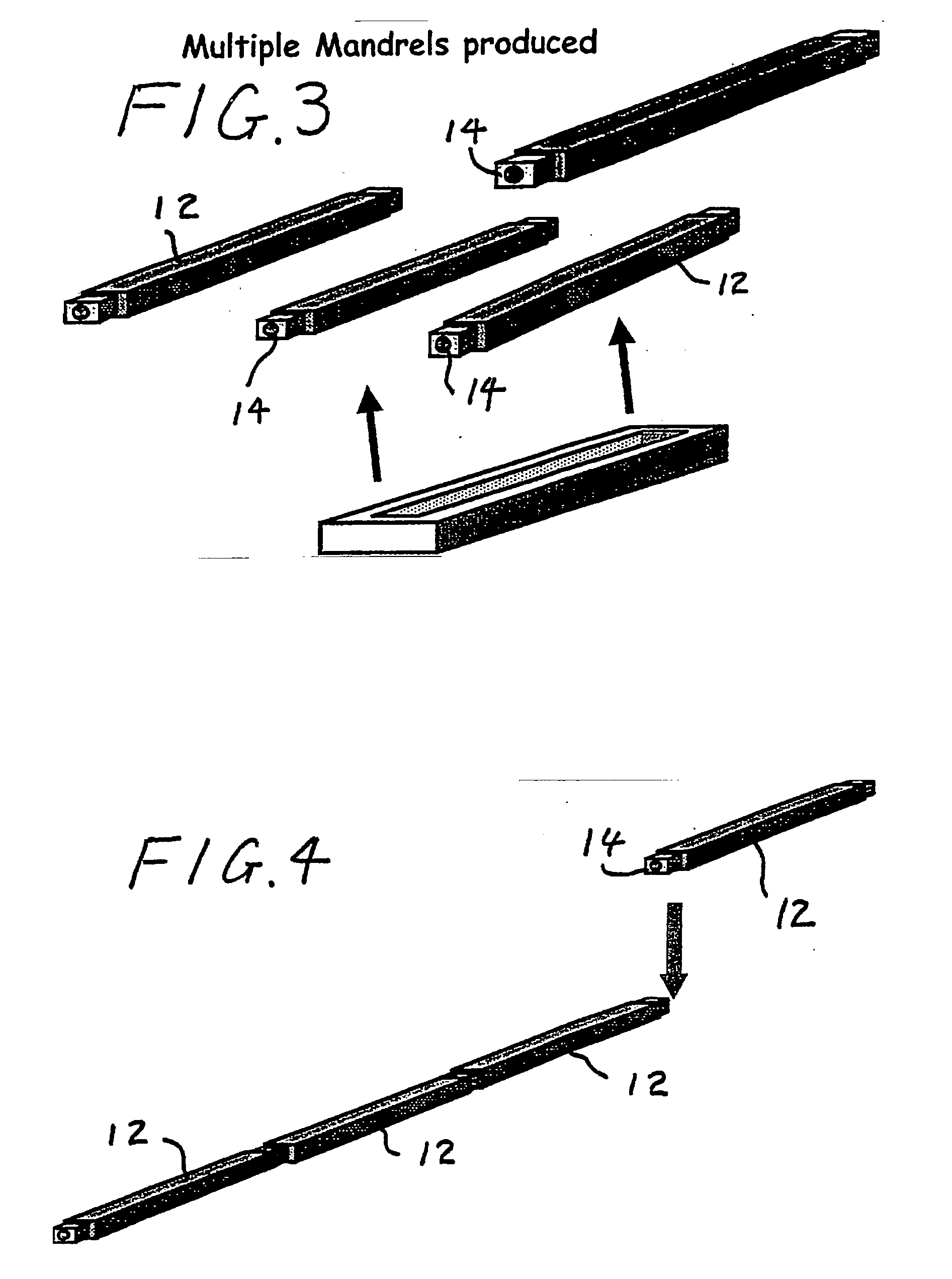Fibre reinforced composite component
a composite component and fiber reinforced technology, applied in climate sustainability, application, air transportation, etc., can solve the problems of high cost of honeycomb core production, low tolerance to damage, and high production cos
- Summary
- Abstract
- Description
- Claims
- Application Information
AI Technical Summary
Benefits of technology
Problems solved by technology
Method used
Image
Examples
Embodiment Construction
[0044] Referring to FIG. 1, a fibre reinforced composite panel component 2 according to the invention comprises a cell defining wall structure 4 located between front and rear skins 6 and 8. The wall structure 4 is in the form of cured fibre reinforced wall elements 10 which extend in side by side relation along the length of the component.
[0045] The following materials are suitable for producing both the wall structure 4 and the skins 6 and 8:
[0046] (i) Advanced composite materials.
[0047] (ii) Dry fabrics with multiple layers of uni-directional fibres stitched together.
[0048] (iii) Non-crimp fabrics (NCF) which utilise heavy weight tows.
[0049] In particular the following materials may be considered for both the wall structure 4 and the skins 6 and 8:
[0050] (i) Heavy uni-directional non-crimp fabric.
[0051] (ii) Biaxial non-crimp fabric.
[0052] (iii) Uni-weaves and 2D weaves (high tow count).
[0053] (iv) 2D braids.
[0054] (v) Triaxial braids, although these braids could have d...
PUM
| Property | Measurement | Unit |
|---|---|---|
| time | aaaaa | aaaaa |
| length | aaaaa | aaaaa |
| width | aaaaa | aaaaa |
Abstract
Description
Claims
Application Information
 Login to View More
Login to View More - R&D
- Intellectual Property
- Life Sciences
- Materials
- Tech Scout
- Unparalleled Data Quality
- Higher Quality Content
- 60% Fewer Hallucinations
Browse by: Latest US Patents, China's latest patents, Technical Efficacy Thesaurus, Application Domain, Technology Topic, Popular Technical Reports.
© 2025 PatSnap. All rights reserved.Legal|Privacy policy|Modern Slavery Act Transparency Statement|Sitemap|About US| Contact US: help@patsnap.com



